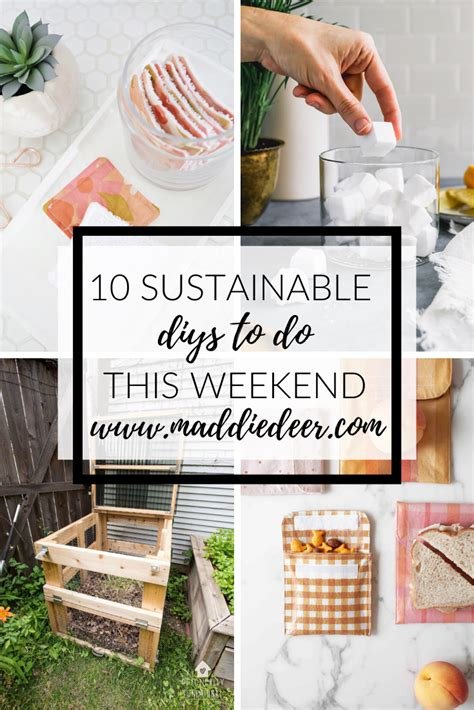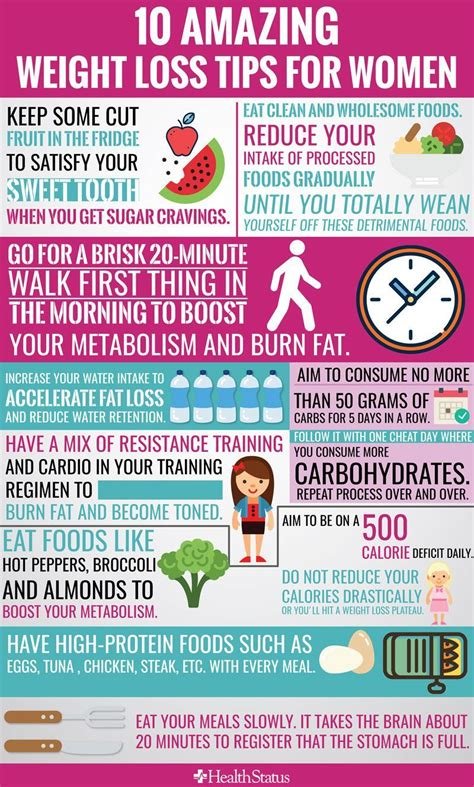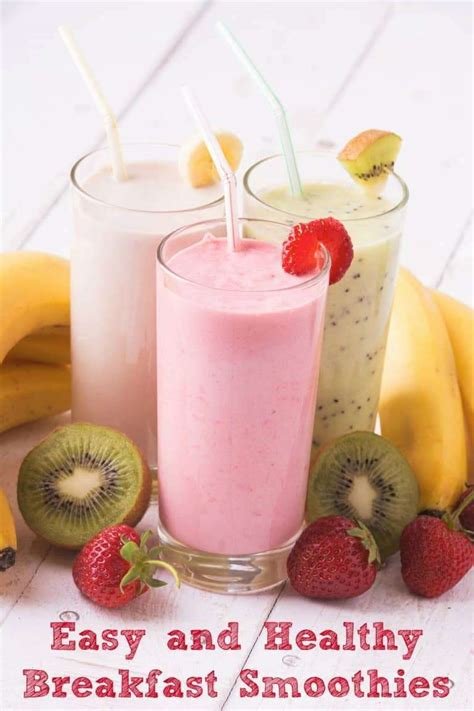10 DIY Ideas for Sustainable Living
Living a sustainable lifestyle is becoming increasingly important as we strive to reduce our impact on the environment. There are countless ways to incorporate sustainability into our daily lives, and DIY projects are a great place to start. In this blog post, we will explore 10 creative and practical DIY ideas for sustainable living that you can easily incorporate into your lifestyle. From repurposing old furniture to creating your own natural cleaning products, there are endless opportunities to be eco-friendly and resourceful. Whether you’re a seasoned crafter or just starting out, these projects are not only beneficial for the environment but also for your own well-being. Let’s dive into these inspiring ideas and discover how we can make a positive impact on the planet while enjoying the satisfaction of creating something beautiful and sustainable.
Repurpose old furniture for eco-friendly decor
Are you looking for ways to decorate your home in an eco-friendly and sustainable way? One option is to repurpose old furniture to give it a new lease on life. Instead of adding to the growing problem of waste in landfills, you can get creative and find new uses for your old furniture.
One idea is to convert an old wooden ladder into a unique shelf unit. Sanding it down and adding a fresh coat of paint can give it a new look, and then you can hang it horizontally on a wall to display plants, photos, or other decorative items.
Another option is to repurpose an old wooden door into a headboard for your bed. Sand it, paint it, and add some decorative hardware, and you have a one-of-a-kind piece that adds character to your bedroom while keeping an old item out of the trash.
By repurposing old furniture, not only are you helping the environment by reducing waste, but you are also creating a unique and personalized space for yourself. It’s a win-win all around.
Create your own natural cleaning products
Have you ever thought about the harmful chemicals in the cleaning products you use in your home?
Many commercial cleaning products contain toxic chemicals that can be harmful to both your health and the environment.
But fear not! You can create your own all-natural cleaning products using simple ingredients that are safe and effective.
With just a few basic items like vinegar, baking soda, and essential oils, you can make everything from an all-purpose cleaner to a natural air freshener.
Start a composting system in your backyard
Composting is not only a great way to reduce waste, but it’s also an excellent way to create nutrient-rich soil for your garden. By starting a composting system in your backyard, you can turn your food scraps and yard waste into a valuable resource for your plants.
One of the best ways to start a composting system is by creating a simple compost bin using materials you already have at home. You can use a plastic or metal container with a lid, or even build a wooden structure to contain your compost pile. Make sure to place your compost bin in a convenient location that has good drainage and receives a good amount of sunlight.
Next, start collecting food scraps such as fruit and vegetable peels, coffee grounds, eggshells, and yard waste such as leaves and grass clippings. Avoid adding meat, dairy, and oily foods to your compost pile as they can attract pests and slow down the decomposition process.
Finally, turn and aerate your compost pile regularly to speed up the decomposition process and keep it smelling fresh. With time and patience, you’ll have a rich, dark compost that can be used to nourish your garden and reduce your carbon footprint.
Make your own reusable beeswax wraps
Are you tired of using single-use plastic wrap to cover your food? Making your own reusable beeswax wraps is not only eco-friendly but also a fun and creative DIY project. Beeswax wraps are a sustainable alternative to plastic wrap and can be used to cover bowls, wrap sandwiches, or preserve cut fruits and vegetables.
First, gather your materials. You will need 100% cotton fabric, beeswax pellets, jojoba oil, and pine resin. Cut the fabric into your desired sizes, such as small squares for wrapping fruits and larger squares for covering bowls. Next, preheat your oven to 185°F and line a baking sheet with parchment paper. Place the fabric on the baking sheet and sprinkle an even layer of beeswax pellets, jojoba oil, and pine resin.
Once everything is evenly distributed, place the baking sheet in the oven for 5-10 minutes, or until the wax mixture has completely melted. Carefully remove the sheet from the oven and immediately pick up each fabric square with tongs, allowing any excess wax to drip off. Hang the wraps to dry, and they will harden into a pliable and reusable covering for your food.
After they have cooled, your beeswax wraps are ready to use. The heat from your hands will soften them, allowing you to mold and shape them around your food. They can be washed with cool water and mild soap and reused many times, making them an excellent eco-friendly alternative to plastic wrap.
Grow your own organic vegetables and fruits
Are you looking to incorporate more organic and sustainable practices into your lifestyle? One great way to do so is by growing your own organic vegetables and fruits right in your own backyard. Not only is this an eco-friendly option, but it also allows you to have access to fresh, nutritious produce at all times.
When you grow your own organic fruits and vegetables, you have complete control over the growing process. You can ensure that no harmful chemicals or pesticides are used, resulting in healthier, more delicious produce for you and your family to enjoy. Plus, you can experiment with different varieties and rare heirloom plants that may not be available at your local grocery store.
Additionally, by growing your own organic vegetables and fruits, you are reducing your carbon footprint. You won’t have to rely on long transportation routes to get your produce from farm to table, cutting down on greenhouse gas emissions. You’ll also be cutting down on plastic packaging and waste that typically comes with store-bought produce.
So, whether you have a large backyard or just a small patio, consider starting your own organic garden. You can grow tomatoes, cucumbers, herbs, strawberries, and so much more, all while making a positive impact on the environment and your health.
Learn how to sew and mend your clothes
Sewing and mending your clothes is not only a great way to save money, but it’s also a sustainable practice that reduces waste. Learning how to sew allows you to repair items that may have small tears or holes, extending their lifespan and keeping them out of landfills. It’s also a valuable skill that empowers you to customize and alter your clothing to fit your unique style and body shape.
When you sew and mend your clothes, you are participating in the slow fashion movement, which is all about valuing quality over quantity and minimizing the environmental impact of the fashion industry. By repairing and maintaining your clothing, you can reduce the need to constantly buy new items, ultimately reducing the demand for fast fashion and its associated negative effects on the planet.
Additionally, learning to mend your clothes allows you to take better care of your wardrobe, ensuring that your favorite pieces last for as long as possible. With a few simple techniques, such as darning, patching, or hemming, you can breathe new life into old garments and continue to enjoy wearing them for years to come.
Overall, embracing sewing and mending as part of your lifestyle not only benefits the environment, but also gives you the opportunity to express your creativity, save money, and develop a deeper connection to the clothing you wear.
Upcycle glass jars into stylish storage containers
Upcycling glass jars into stylish storage containers is not only a budget-friendly way to organize your home, but also an ecofriendly alternative to buying new storage solutions. It’s a simple and creative way to reduce waste and add a touch of personality to your living space.
Start by collecting glass jars of different shapes and sizes. Whether it’s a mason jar, a pickle jar, or a coffee jar, all of them can be repurposed into unique storage containers. Once you’ve gathered your jars, thoroughly clean them and remove any labels or sticky residue.
Next, you can customize your glass jars with paint, twine, or decorative paper to match your home decor. Adding a splash of color or a personal touch will transform them into stylish storage containers that you’ll be proud to display on your shelves or countertops.
These upcycled glass jars can be used to store a variety of items, such as spices in the kitchen, cotton balls in the bathroom, or office supplies on your desk. The possibilities are endless, and you’ll feel good knowing that you’ve given new life to something that would have otherwise been thrown away.
Craft homemade candles with eco-friendly ingredients
Creating your own homemade candles is not only a fun and relaxing activity, but it can also be a sustainable and eco-friendly choice when you use all-natural and biodegradable ingredients. By making your own candles, you have control over what goes into them, avoiding the use of harmful chemicals and synthetic materials that are often found in store-bought candles.
When crafting your candles, opt for soy or beeswax as your base instead of paraffin, which is derived from petroleum. Soy and beeswax are renewable and non-toxic alternatives, making them a much greener option for your DIY candle-making projects.
For added eco-friendliness, consider using essential oils and natural dyes to scent and color your candles, rather than artificial fragrances and synthetic colorants. Not only do essential oils provide a natural and pleasant scent, but they also offer therapeutic benefits depending on the oil used.
By engaging in the art of crafting homemade candles with eco-friendly ingredients, not only are you reducing your carbon footprint, but you are also enjoying the process of creating beautiful and sustainable home decor items.
Build a DIY rainwater harvesting system
Are you looking to reduce your water usage and save money on your water bill? Building a DIY rainwater harvesting system is a great way to achieve both of these goals. By collecting rainwater from your roof, you can use it to water your garden, wash your car, and even flush your toilet. Not only is this an eco-friendly practice, but it also helps to reduce the demand on local water supplies.
One of the first steps in building your DIY rainwater harvesting system is to install a rain barrel. This can be as simple as placing a large container under a downspout to catch the rainwater. You can also choose to invest in a more complex system that includes a filtration system and pumps to distribute the water around your property.
Once you have your rain barrel in place, you’ll need to connect it to your downspout using a diverter system. This will allow the rainwater to flow into the barrel while preventing debris from clogging the system. You may also want to consider adding a mesh screen to the top of the barrel to further filter out leaves and other debris.
Finally, once your system is in place, you can start reaping the benefits of harvesting rainwater. Not only will you be reducing your environmental impact, but you’ll also be saving money on your water bill. Plus, you’ll have a supply of water on hand for those times when local water supplies are scarce.
Learn to make your own natural bath and beauty products
Are you looking to reduce the amount of chemicals in your beauty routine and opt for more natural products? Learning to make your own bath and beauty products can be a fun and eco-friendly endeavor. By using organic ingredients and essential oils, you can create customized skincare and beauty products that are tailored to your needs.
One of the first steps in learning to make your own natural bath and beauty products is to research and gather high-quality ingredients. Whether you’re interested in making soaps, lotions, or balms, you’ll need to source organic oils, butters, and additives such as clays and herbs to create your desired products.
Next, you’ll want to invest in some basic equipment such as a digital scale, thermometer, and mixing tools to ensure that your products are made with precision and accuracy. Once you’ve gathered your ingredients and equipment, the possibilities for your natural bath and beauty products are endless.
With some practice and experimentation, you can create a range of luxurious products that are customized to your skin type and preferences. From soothing lavender body scrubs to hydrating argan oil hair masks, making your own natural bath and beauty products allows you to take control of what you put on your body while also reducing your carbon footprint.
Frequently Asked Questions
Why is sustainable living important?
Sustainable living is important because it helps to reduce environmental impact, conserve resources, and promote a healthier planet for future generations.
What are some DIY ideas for sustainable living?
Some DIY ideas for sustainable living include repurposing old furniture, creating natural cleaning products, starting a composting system, making reusable beeswax wraps, growing organic fruits and vegetables, learning to sew and mend clothes, upcycling glass jars, crafting homemade candles, building a rainwater harvesting system, and making natural bath and beauty products.
How can repurposing old furniture contribute to sustainable living?
Repurposing old furniture can contribute to sustainable living by reducing the need for new materials and minimizing waste. It also adds a unique and eco-friendly touch to your decor.
What are the benefits of creating natural cleaning products?
Creating natural cleaning products reduces the use of chemicals in your home, promotes a healthier living environment, and minimizes the impact on the planet by using non-toxic ingredients.
Why is composting important for sustainable living?
Composting helps to reduce food waste, enrich the soil, and reduce the need for chemical fertilizers, ultimately contributing to a more sustainable and eco-friendly lifestyle.
How can learning to sew and mend clothes be part of sustainable living?
Learning to sew and mend clothes allows you to extend the life of your wardrobe, reduce the need for new clothing purchases, and minimize textile waste.
What are the benefits of building a DIY rainwater harvesting system?
Building a DIY rainwater harvesting system helps to conserve water, reduce water bills, and provides a sustainable source of water for gardening and other outdoor uses.






